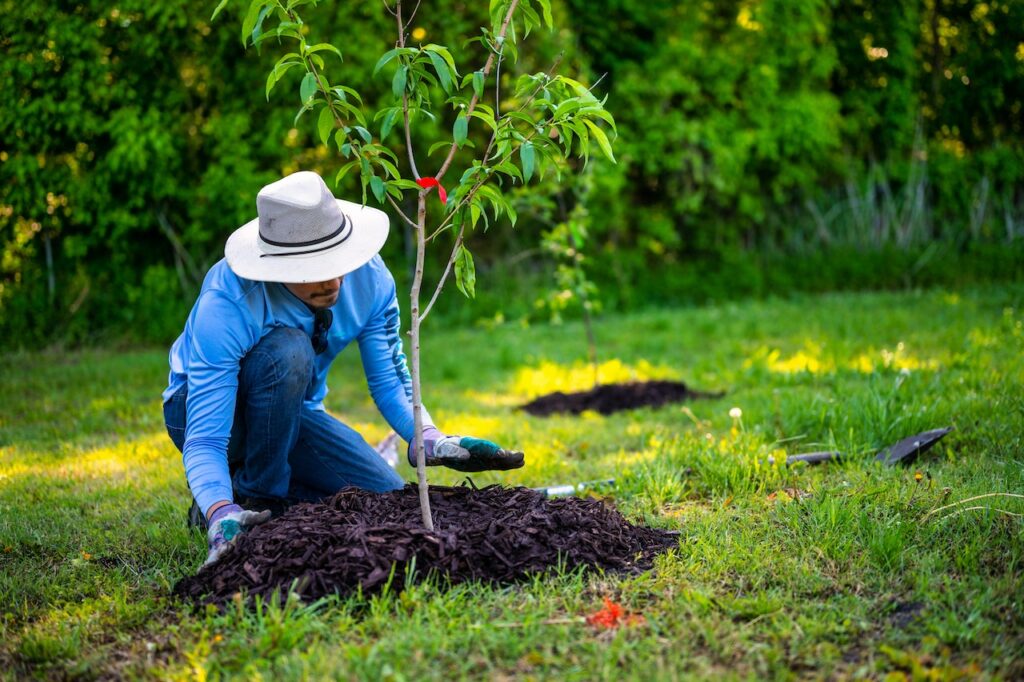Imagine a garden with colorful, juicy fruits hanging from the branches of trees you planted and nurtured. Not only does this sight bring joy, but it also offers fresh, delicious treats for you and your family. Growing fruit trees can be a fun and rewarding activity if done right.
This comprehensive guide will help you understand the essentials of fruit tree cultivation, from selecting the perfect variety to reaping the fruits of your labor.
Understanding Climate and Soil Requirements
Choosing Fruit Tree Varieties Suitable for Your Climate
Different fruit trees thrive in different climates. For instance, citrus trees love warm weather, while apple trees need cold winters. Research the fruit trees that do well in your area. If you love figs, fig trees are versatile and can thrive in a variety of climates.
Assessing Soil Conditions for Optimal Growth
The soil is like a tree’s food. Trees need good soil to grow big and strong. Test your soil to see if it has the nutrients your fruit trees need. If it doesn’t, don’t worry! You can add what’s missing.
Soil Preparation Techniques if Needed
If your soil isn’t perfect, use compost to make it better. Compost is like vitamins for the soil. Mix it in before you plant your trees. This will give them a nutrient-rich place to grow.

Preparing the Planting Site
Assessing Sunlight Exposure and Spacing
Determining ideal sunlight exposure for fruit trees
Fruit trees love sun. They need it to make yummy fruit. Make sure you plant your trees where they will get lots of sunlight every day. Six to eight hours of sun is a good amount.
Calculating Spacing Requirements for Proper Growth
Trees need space to spread their branches. If trees are too close, they might not grow big or make lots of fruit. Plant your trees far enough apart so they have space to grow, but not too far that they feel lonely. A good rule is to leave about 15 to 20 feet between trees.
Selecting the Best Location in Your Yard
Pick a spot that is sunny, has good soil, and enough space. If your yard is windy, find a spot that is protected from the wind. Trees don’t like to be too windy as it makes them chilly.
Planting and Pruning Techniques
Planting Step-by-Step
- Digging the planting hole and preparing the roots: Dig a hole that is big enough for the roots to spread. The hole should be twice as wide as the roots. Before you plant the tree, make sure the roots are not tangled.
- Proper planting depth and soil backfilling: Don’t plant the tree too deep or too shallow. The spot where the roots meet the trunk should be just above the ground. Fill the hole with soil and press it down gently.
- Watering and initial care after planting: Give your tree a big drink of water after planting. Keep the soil moist, but not too wet, for the first few weeks.
Pruning for Healthy Growth
Pruning means cutting branches so that the tree grows better. It helps the tree to make more fruit and stay healthy.
Use clean, sharp tools for pruning. Cut the branches that are broken, dead, or too close to each other. This gives the tree a nice shape and helps air flow through the branches.
Different trees need different types of pruning. For example, peach trees like lots of pruning, but cherry trees don’t need much. Learn what your tree likes best.

Watering and Fertilizing
Trees like a drink, but not too much. Too much water can be as bad as too little. Young trees need water every week, and older trees can go a bit longer.
Water slowly so it can soak down deep to the roots. A drip system is good for this. If leaves turn yellow or look sad, check the soil. If it’s too dry or too wet, change how much you water.
Choosing and Applying Fertilizers
Fertilizers are like extra food for trees. They help trees grow strong and make lots of fruit.
There are many fertilizers. Some are natural like compost, and some are made by people. Choose what works best for your trees. Follow the instructions on the fertilizer. Usually, it’s best to fertilize in spring when the tree is growing fast.
Pest and Disease Management
If your tree looks sick, it might have bugs or a disease. Look for spots on leaves, weird bumps, or leaves that are eaten.
Keep your tree happy by watering and fertilizing. A happy tree can fight off bugs and diseases better than a sad tree. You can use sprays to keep bugs away. Some sprays are made from chemicals and others are made from natural stuff.
Harvesting and Maintenance
Fruit is ready when it’s the right color, smells good, and is easy to pick. Be gentle when picking, so you don’t hurt the tree.
Some fruit likes the fridge, and some don’t. Learn what your fruit likes best.
Prune, water, and fertilize your tree to make it produce lots of fruit. Some trees will make fruit for a long time if you take good care of them.
Regular Maintenance for Healthy Trees
Put mulch around your tree to keep the soil moist. Pull weeds so they don’t steal food and water from your tree. Prune your tree and sometimes remove some fruit. This helps the tree make bigger, better fruit.
Key Takeaways
Growing fruit trees is like going on an adventure. There’s a lot to learn, but it’s a lot of fun. Remember to choose the right trees for your climate, give them plenty of sun, and keep them happy with water and nutrients. Watch out for bugs and diseases, and learn how to pick your fruit when it’s ready.
Your garden can be a magical place with trees full of sweet, juicy fruit. It takes time and care, but the reward is worth it. Happy planting!






